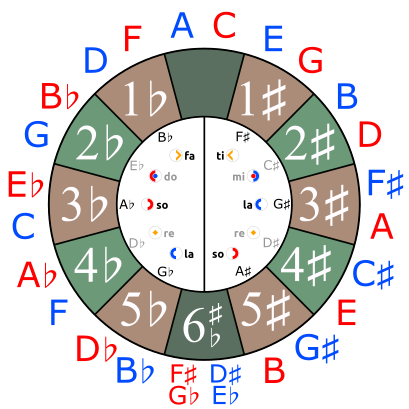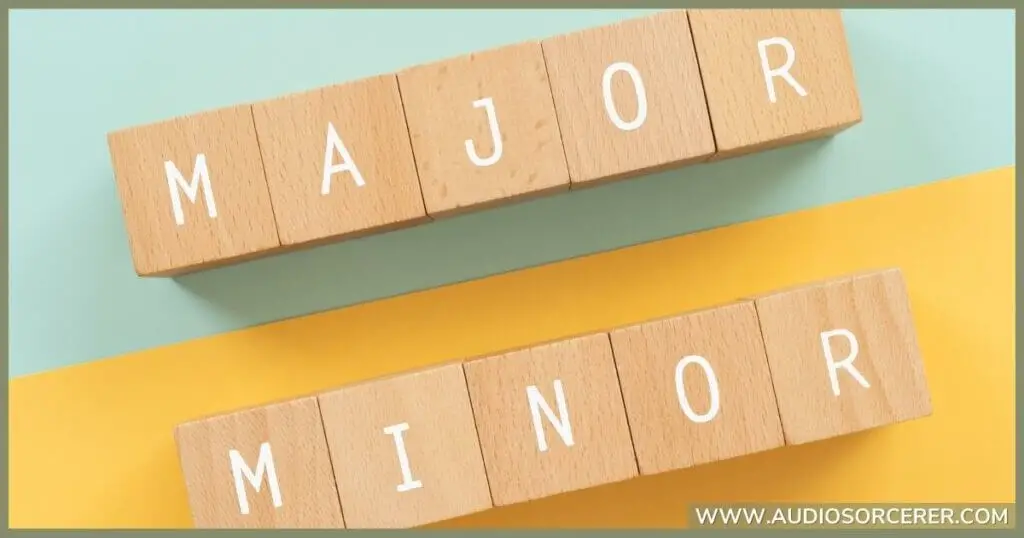
The world of music is full of enchanting melodies, harmonies, and rhythms. But, underlying these sounds is a foundation of theory, and at its heart lies a tool known as the circle of fifths. But what is the circle of 5ths? In this article, we’ll journey through its intricacies and uncover its significance in music. Let's dig in!

The origins of the circle of fifths can be traced back to ancient times. The concept itself emerges from the Pythagorean system of tuning, based on the ratio relationships between strings. Pythagoras, the famed Greek mathematician and philosopher, discovered that when two strings are in a ratio of 3:2, they produce the harmonic interval of a fifth. This simple revelation set the stage for what would become a fundamental component of Western music theory.
As the centuries progressed, the importance of the interval of the fifth became more apparent. Medieval and Renaissance musicians began to recognize patterns in key relationships and modulations. The circle of fifths started to take shape, not as a visual tool initially, but as a conceptual idea. By the Baroque period, the circle became a more defined and organized system, aiding composers like Johann Sebastian Bach in creating intricate harmonic progressions and modulations in their compositions.
Today, the circle of fifths is an essential tool for musicians, educators, and students. Over the centuries, its design has been refined to include major and minor keys, making it a comprehensive guide for understanding key signatures and relationships. From its humble beginnings in the observations of Pythagoras to its current status as a cornerstone of music theory, the circle of fifths stands as a testament to humanity's desire to understand and categorize the beauty of music.
Before delving into the circle itself, it's vital to grasp two fundamental concepts: major keys and minor keys.
Major Key: This key creates a sound that's often perceived as happy or uplifting. Every major key has a relative minor key, which shares the same key signature but offers a sadder or more introspective sound.
Minor Key: This is the counterpart to the major key, producing a tone that's typically seen as melancholic or dramatic.
Related Article: How To Find What Key A Song Is In (5 Simple Methods)

The circle of fifths isn’t just a theoretical concept; it's a practical guide for every musician. If you've ever felt overwhelmed by the myriad of key signatures in music, the circle provides clarity. Beginning with C major at the top (with no sharps or flats), as you move clockwise, sharps are added. Conversely, moving counterclockwise adds flats. For example, G major has one sharp, while F major has one flat. Interestingly, every major key has a corresponding relative minor that shares the same key signature, and these can also be found on the circle.
Every songwriter and composer knows the importance of a good chord progression. The circle of fifths offers insights into which chords can follow one another harmoniously. Common sequences, like the IV-V-I in major keys or the ii-V-i in minor keys, can be visualized and understood more intuitively using the circle. For instance, in the key of C major, an F (IV) to G (V) to C (I) progression aligns perfectly with the circle's sequence.
One of the most powerful tools in a composer’s toolkit is the ability to change musical keys or modulate. Using the circle of fifths, composers can identify closely related keys that will ensure a smoother transition. For example, if you're in the key of C major and wish to introduce a bit of drama, modulating to its relative minor, A minor, or even to the dominant, G major, can be an effective choice.
For soloists and those who love to improvise, the circle of fifths can be an invaluable tool. By understanding the relationships between scales and their associated chord progressions, musicians can craft solos that not only fit harmonically but also create tension and resolution. The circle provides a roadmap, ensuring that improvisations have structure and coherence.
Beyond just mechanics, the circle of fifths can serve as inspiration. By exploring unfamiliar or less commonly used key signatures, songwriters can discover unique sounds and moods to infuse into their compositions. The circle, thus, is not just a tool for understanding but also for creating.

Understanding the intimate relationship between major and minor keys is crucial in both composition and analysis. Every major key has an associated relative minor key, and vice versa. These pairs share the same key signature. On the circle of fifths, the relative minor is found three steps (or a minor third) below its major counterpart. For example, A minor is the relative minor of C major, and both share the same absence of sharps or flats in their key signature. Recognizing these relationships helps musicians anticipate chord progressions, modulations, and melodic tendencies.
The circle of fifths doesn’t only chart the course of standard major and minor keys but also highlights the fascinating world of enharmonic equivalents. These are notes, intervals, or keys that sound the same but are written differently. For example, F# major and Gb major are enharmonic equivalents. They sound identical but are notated differently, with F# major using six sharps and Gb major using six flats. Grasping this concept can help musicians read, transcribe, and even transpose music more efficiently.
Beyond the standard major and minor tonalities, the circle can also aid in understanding modal interchange, a technique where chords are borrowed from parallel scales or modes. By examining the circle, musicians can experiment with introducing unexpected, yet harmonically related, chords into their progressions, adding depth and color to their compositions.
While the circle of fifths is firmly rooted in the 12-tone Western music system, the fundamental principles it embodies can be applied to other musical cultures. Non-Western musical traditions might utilize scales with more or fewer than 12 tones, or emphasize different intervals, but the idea of exploring relationships between scales, keys, and tonalities remains universal. Musicians seeking to integrate non-Western sounds into their work can use the circle as a launching pad, adapting its principles to fit different musical contexts.
For musicians who often need to transpose music to suit different instruments or vocal ranges, the circle of fifths is a lifesaver. By quickly locating the original key and the desired key on the circle, one can gauge the number of steps or tones between them and make the necessary adjustments. This makes the daunting task of transposing much more approachable.
To create chord progressions, musicians can utilize the circle to determine harmonically close chords. Progressing in fifths (or fourths, depending on your direction) often results in pleasing and cohesive sequences. For example, moving from a Dm chord (ii) to a G7 chord (V) and resolving to C major (I) in the key of C major can be visualized directly on the circle.
Musicians aiming to enhance their sight-reading skills can use the circle to familiarize themselves with various key signatures quickly. By regularly referencing the circle, recognizing the key of a piece becomes second nature, making sight reading in any key more fluid.
Want to add some drama or tension to a performance or composition? Use the circle to identify keys that are closely related to your starting key. Subtly modulating to these adjacent keys can introduce a fresh sound without feeling jarring. For instance, if you're playing in C major, consider a brief modulation to G major or its relative minor, E minor.
For those looking to spice up their compositions or improvisations, the circle can also be a gateway to explore modes and non-traditional scales. By understanding the relative positions of major and minor keys, musicians can branch out into modes like Dorian, Phrygian, or Lydian, adding unique flavors to their sound.
The circle isn't just for composition and performance; it's also a great tool for structuring practice sessions. For instrumentalists aiming to master scales, arpeggios, or exercises, rotating through keys based on the circle ensures a comprehensive and structured approach, covering all key signatures over time.
Related Article: Frequency Notes Chart: From Hertz To Harmonies
It's named for the interval between each note on the circle. Moving clockwise, each note is a perfect fifth higher than the previous one. Conversely, moving counter-clockwise, each note is a perfect fourth higher, though this is commonly still referred to as the circle of fifths due to its primary direction.
The circle of fifths organizes keys based on their number of sharps or flats. Starting at the top with C major (which has no sharps or flats), moving clockwise adds sharps, while moving counter-clockwise adds flats. This arrangement helps musicians quickly determine the key signature of a piece.
Relative minor keys exist for every major key and they share the same key signature. For instance, A minor is the relative minor of C major as both share the same key signature.
Extended versions of the circle might include other musical modes, like Dorian, Phrygian, or Lydian. These can offer musicians a broader palette of sounds and moods to explore in their compositions or improvisations.
Absolutely! While the circle has roots in classical music theory, its principles are universal. Musicians across genres—from jazz to rock to pop—utilize the circle to understand chord progressions, key changes, and harmonic relationships.
The circle of fifths isn't just a theoretical tool; it's a window into the rich tapestry of musical language. Rooted in ancient mathematical observations and refined through centuries of musical exploration, this diagram effortlessly bridges the gap between the past and the present. It has formed the masterpieces of classical composers and continues to be a guiding force in contemporary music across genres.
For musicians of all skill levels, the circle simplifies the intricacies of key signatures, harmonic relationships, and modulations. It's a testament to the enduring principles that underlie the vast world of sound, ensuring its relevance in an ever-evolving musical landscape.
As music transforms and adapts with time, the circle of fifths stands as a steadfast reminder of the universal patterns and timeless beauty inherent in the art of sound. From those newly discovering "what is the circle of 5ths" to experts pushing the boundaries of composition, this tool remains an invaluable cornerstone in the world of music.
"Some of the links within this article are affiliate links. These links are from various companies such as Amazon. This means if you click on any of these links and purchase the item or service, I will receive an affiliate commission. This is at no cost to you and the money gets invested back into Audio Sorcerer LLC."